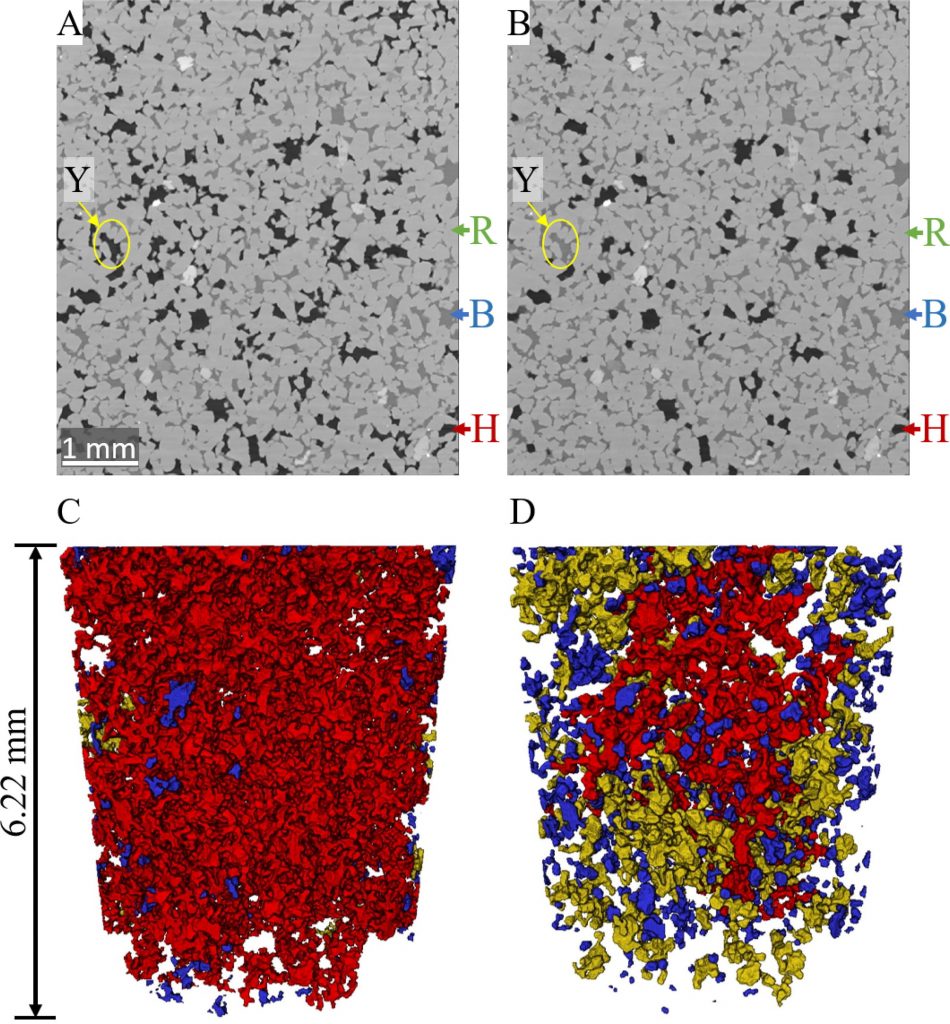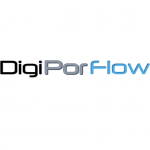Recent Highlights
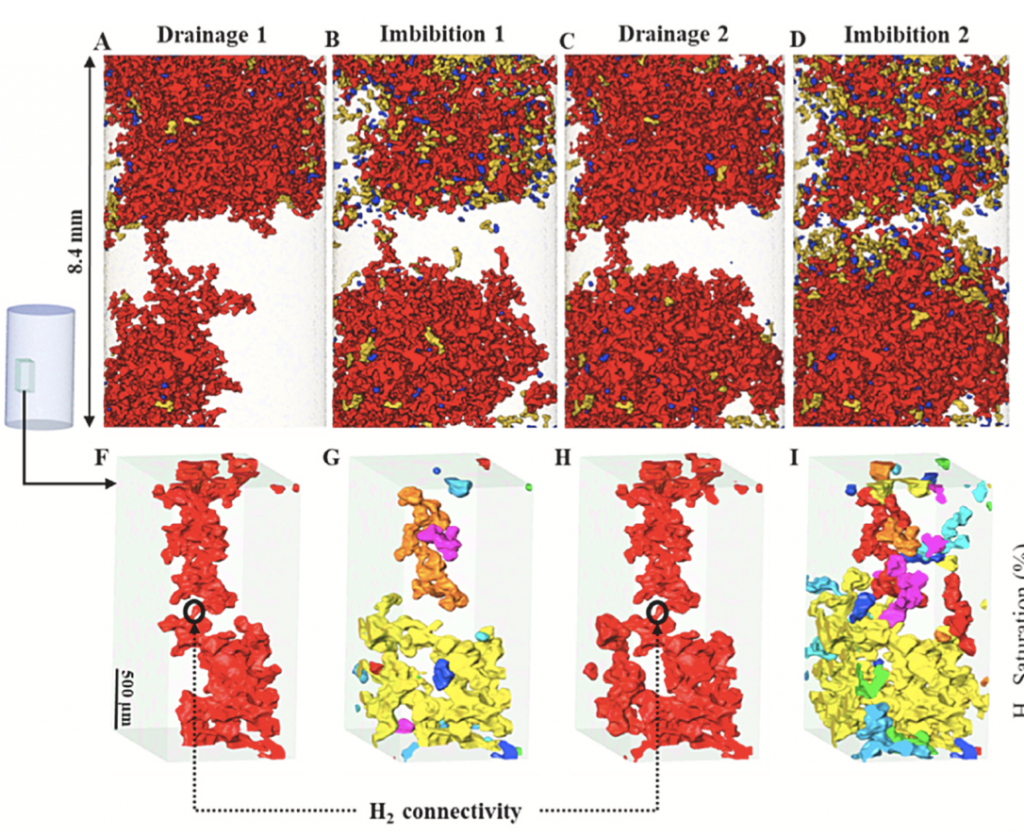
Subsurface hydrogen storage controlled by small-scale rock heterogeneities
This study, published in the International Journal of Hydrogen Energy, reveals how subtle variations in pore structure significantly influence hydrogen storage efficiency in subsurface reservoirs. Using advanced 3D imaging, the research demonstrates that hydrogen preferentially flows through high-permeability pathways, bypassing low-permeability zones, which reduces storage capacity and alters recovery dynamics. Unexpectedly, imbibition processes can result in higher hydrogen saturations due to complex capillary forces at heterogeneous boundaries. These findings challenge conventional reservoir models that often overlook small-scale heterogeneities, emphasizing their critical role in optimizing hydrogen storage and withdrawal strategies. As the energy transition advances, this work provides essential insights for designing reliable underground hydrogen storage systems.
Dispersivity calculation in digital twins of multiscale porous materials using the micro-continuum approach
This paper published in the Journal of Environmental Chemical Engineering introduces a novel computational framework to analyze flow and transport properties in multiscale porous materials. Utilizing the Darcy-Brinkman-Stokes equation, we demonstrate seamless modeling across different porosity scales, incorporating both fully and partially resolved pores. We validate their method through simulations on ceramic foams and microporous carbonate rocks, comparing micro-continuum results to high-resolution models. These findings underscore the efficiency of this approach in predicting dispersivity and permeability across scales, advancing digital twin applications in fields like carbon storage and filtration. This work highlights the utility of upscaling local porosity and transport dynamics to improve computational efficiency while retaining accuracy.
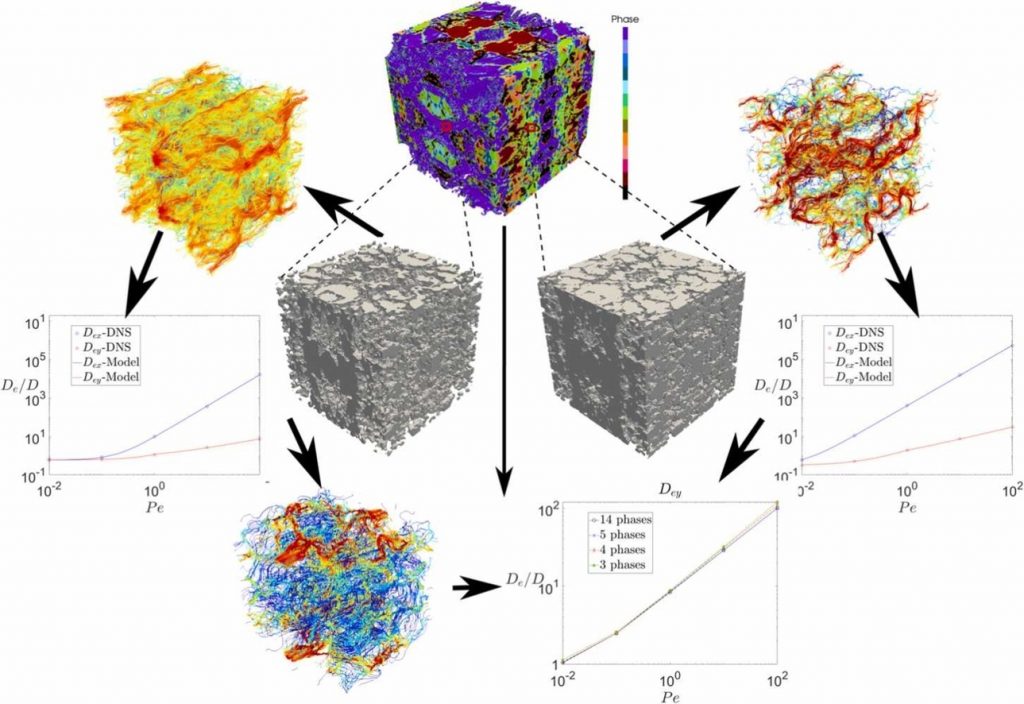
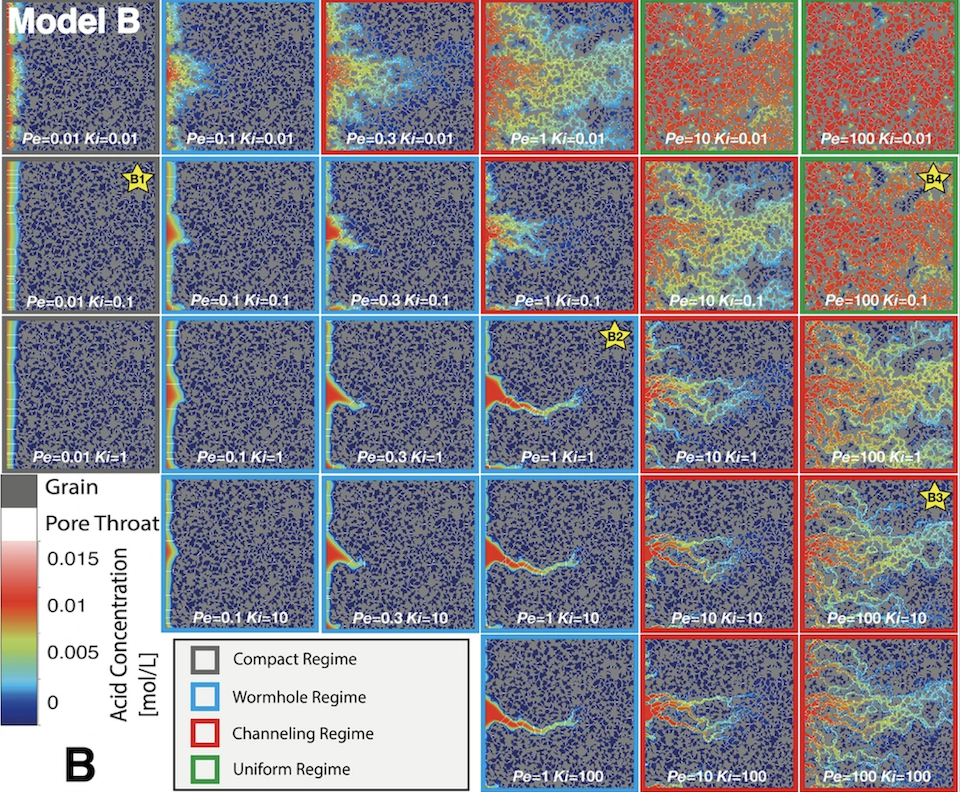
Channeling is a distinct class of dissolution in complex porous media
This study, published in Scientific Reports redefines how we understand mineral dissolution in porous media by identifying a fourth regime, channeling, alongside the traditional compact, wormhole, and uniform patterns. Channeling occurs in structurally complex materials, where pre-existing fast flow paths are preferentially widened, leading to disproportionate permeability increases with minimal porosity change. Using advanced numerical simulations and machine learning based clustering analysis, we demonstrate that channeling is distinct, with unique porosity-permeability dynamics critical for applications like CO₂ storage and geothermal energy. The findings emphasize the role of pore structure in reactive flow and update the conceptual model of dissolution regimes, paving the way for more accurate predictions in subsurface engineering. This breakthrough underscores the need to incorporate channeling into models for better management of industrial and environmental processes.
Influence of Local Aperture Heterogeneity on Invading Fluid Connectivity During Rough Fracture Drainage
This paper, published in Transport in Porous Media introduces a multiscale framework that connects pore‐scale processes with the larger-scale hydromechanical behavior of tight rock formations. By integrating experimental observations of multiphase fluid flow in fractures with numerical modeling, the study reveals how microscopic interactions and structural heterogeneities influence fluid flow and mechanical deformation. The insights gained offer promising directions for optimizing resource extraction and improving subsurface management practices.
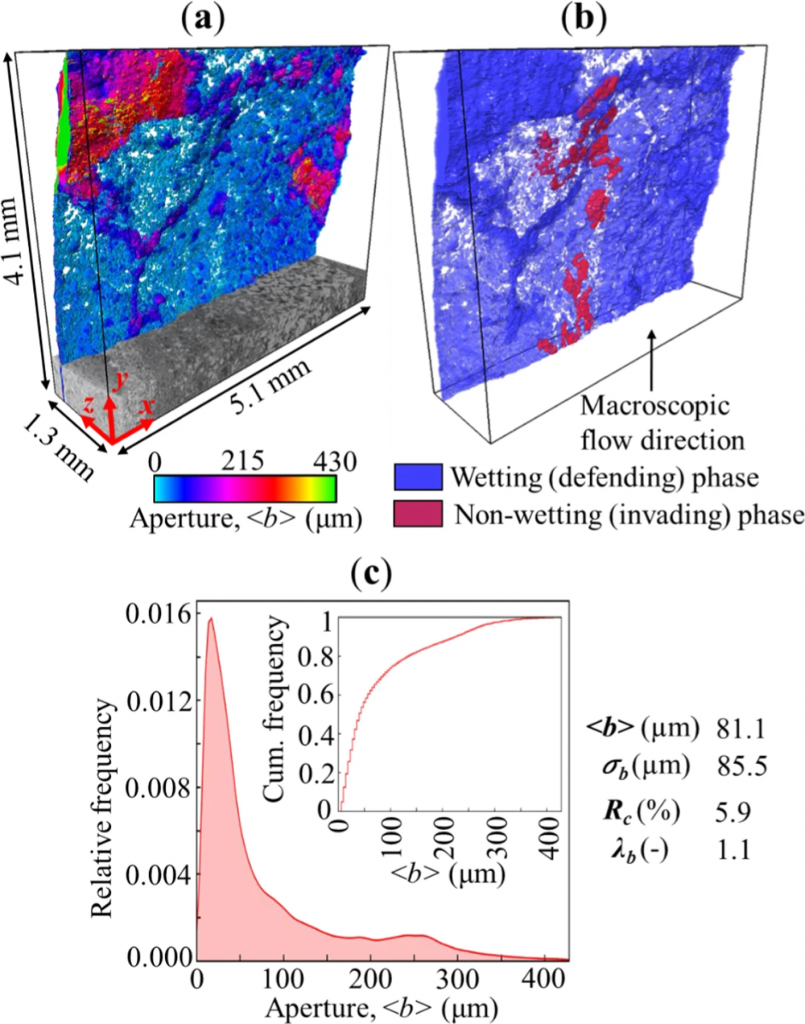
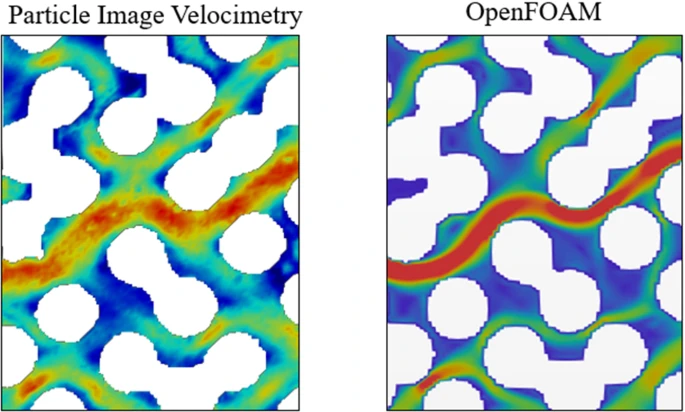
Benchmarking the Viability of 3D Printed Micromodels for Single Phase Flow Using Particle Image Velocimetry and Direct Numerical Simulations
This study, published in Transport in Porous Media shows that 3D printing can be optimized to create highly accurate micromodels, reliably reproducing complex pore geometries down to 140 μm. The research benchmarks the printing process—addressing issues like dimensional fidelity and surface quality—and validates the models through Particle Image Velocimetry and direct numerical simulations, offering a cost-effective tool for investigating pore-scale processes in applications such as CO₂ sequestration, enhanced oil recovery, and geothermal energy.
Pore-Scale Visualization of Hydrogen Storage in a Sandstone at Subsurface Pressure and Temperature Conditions: Trapping, Dissolution and Wettability
The paper, published in the Journal of Colloid and Interface Science, examines the viability of underground hydrogen storage by investigating pore-scale processes in hydrogen-brine systems within Bentheimer sandstone under realistic subsurface conditions. Using in situ X-ray imaging, the study compared two injection schemes—displacing H₂ with H₂-equilibrated brine versus non-H₂-equilibrated brine—to assess trapping, dissolution, and wettability. The sandstone exhibited consistent wettability to brine and non-wettability to H₂, with contact angles around 54° and 53° respectively, and demonstrated a higher H₂ recovery of 43.1% with non-equilibrated brine compared to 31.6% with equilibrated brine, suggesting that hydrogen may dissolve in the imbibing brine. Overall, the findings indicate that while underground H₂ storage shows promise for energy applications, further research is necessary to fully understand the pore-scale interactions under reservoir conditions.
